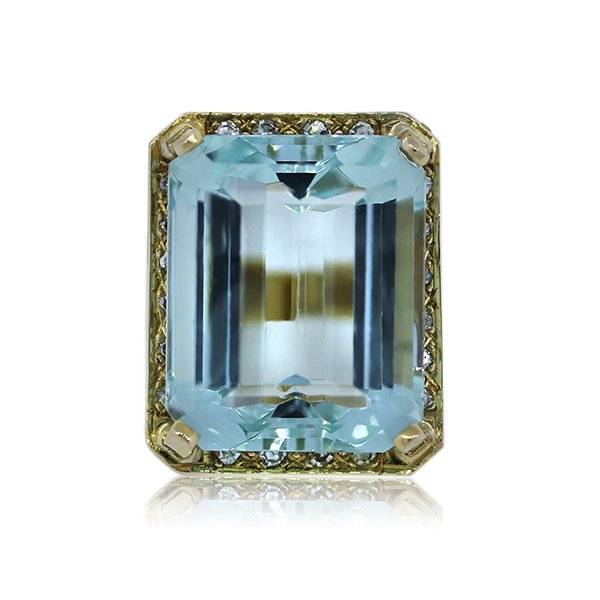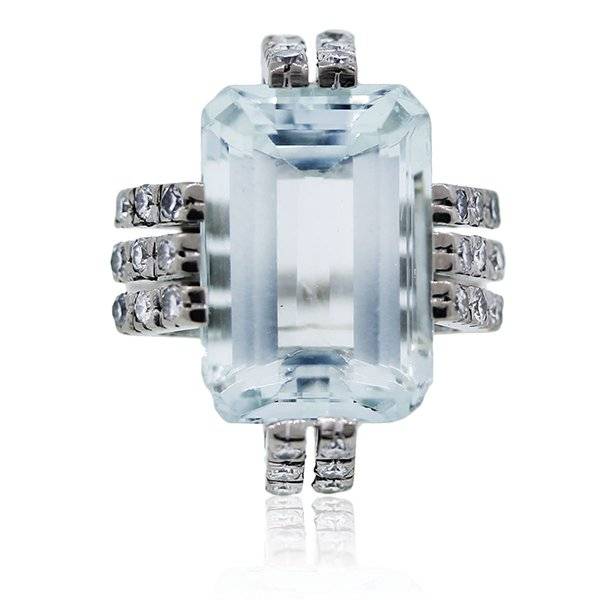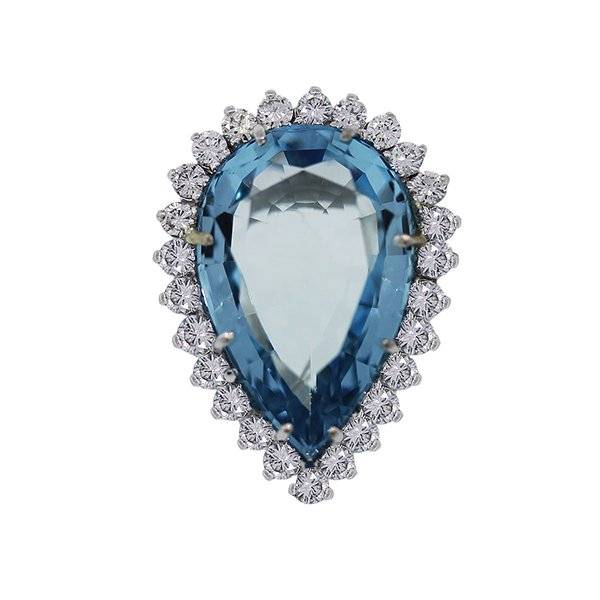Spotlight on Aquamarine

It’s time to call attention to the March birthstone, aquamarine! Aquamarine stones have whimsy and elegance. Although this gem is found commonly in traditional pieces of jewelry like necklaces, watches and rings, aquamarine is a special gem stone that can come in large pieces and may be sculpted into unique shapes.
Aquamarine looks a great deal like blue topaz, but is typically more expensive and coveted. This is largely due to the fact that topaz is more common and because the color of aquamarine is natural (vs. topaz, which is colored blue by radiation).
Description
Aquamarine comes in hues ranging from sea green to a clear, sky blue, reminiscent of a summer afternoon spent by the beach. These fascinating little stones may be cut in just about any style, but the common forms include emerald cuts and round or oval brilliants. As a result of the even color and clarity of aquamarine, some cutters prefer to form aquamarine into unique shapes.
Everyday Uses
The hardness of aquamarine (7.5 on the Mohs scale) makes it an easy to care for stone that can be worn every day without concern. In fact, you can clean your aquamarine gem stones at home with a toothbrush and a little soap and water. Regular maintenance will keep your gems lustrous and beautiful.
Fun Facts About Aquamarine
- Aquamarine is associated with marine legends. Probably because of its clear and striking color, aquamarine stones are associated with the safe return of sailors. It is also the stone of young people and is thought to strengthen marriage fidelity.
- The largest aquamarine stone ever cut is known as the “Dom Pedro.” This amazing gem weighs an outstanding 26 kilograms and is now housed at the Smithsonian Institution.
- The darker the color, the more valuable the stone. Aquamarine is classified as a species of the mineral beryl. Pure beryl has no color, but trace elements in beryl create different colors. While aquamarine comes in shades of sea foam and sky blue, the darker the hue, the more valuable the gem. In addition, the blue varieties tend to be more valuable than the green varieties.
- The name “aquamarine” is derived from a Latin phrase, “water of the sea.”
- Aquamarine sometimes comes in massive quantities. In some places, large crystal masses of aquamarine have been discovered. These formations have yielded gems as large as 2,000 carats! It is somewhat common to find large deposits of aquamarine in flawless condition. It is this abundance of natural aquamarine that makes it affordable for consumers. In fact, synthetic aquamarine is difficult and expensive to manufacture.
When buying your own aquamarine, remember that the saturated colors are more valuable, and blue is favored over shades of green. Never accept an aquamarine stone that has visible flaws because flawless specimens are widely available. Because aquamarine is suitable for everyday wear, shop around for those pieces of jewelry that you would happily put on every morning. Your selected gems should be clear and lustrous, like glass.




Comments are closed.